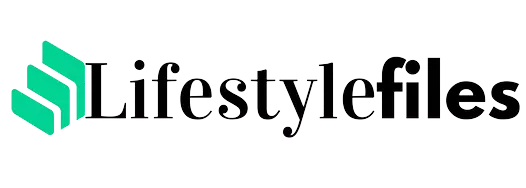If you think about the hair types, the straight, curly, and wavy hair will surely come to mind. Instead, there are numerous and more 4 different types of hair classified according to their structure, but also according to the shaft and texture.
Exactly 12 hair types have been identified and each type needs specific care.
Let’s find out what the types of hair are, categorizing them into the three macro-categories known to all (straight, curly, and wavy) and what care they need to always appear at the top and healthy.
The characteristic classification of hair, straight-wavy-curly, is now considered obsolete: there are in fact 12 types of hair, grouped into 4 sub-categories. In this article, we have included all these types of hair and their characteristics. We will also learn how to distinguish the type of your hair and how to take care of it in the best way possible.
To categorize hair so accurately was for the first time the famous American hairstylist Andre Walker who defined every single category with extreme precision. This classification is extremely useful as it allows you to take care of your hair in a specific way, facilitating styling and getting the best out of your hair.
By evaluating your hair, these in all likelihood can easily be associated with more than one category: nothing to worry about, if you think that this detail certainly makes it easier to identify the most correct and effective hair care routine, thus improving health and the beauty of your hair.
12 hair types and how to treat them
The main types of hair can be classified according to 4 macro-categories:
- straight hair
- wavy hair
- curly hair
- spiral hair or the classic “afro” hair
Hair types: how to recognize yours?
Identifying the types of hair is quite simple, although it is necessary to evaluate a series of essential factors such as structure, density, and porosity. The density indicates the amount of hair that makes up the crown while as regards the structure, it is necessary to refer to the thickness of the single hair which can be thin, medium, or thick.
Finally, in order to identify your hair type, you need to pay attention to the relative porosity, an indicator that measures the amount of moisture that the hair is able to absorb: it can in fact be variable depending on the condition of the cuticle that covers the external structure of the hair, preserving it from mechanical, chemical and environmental stress.
In general, it should be borne in mind that all hair is naturally porous, although hair that has suffered damage from bleaching and aggressive chemical and thermal treatments, may be more porous than untreated hair.
Therefore, keeping these important indicators in mind, recognizing your hair type among all hair types will certainly be easier, allowing you to customize and optimize your haircare routine.
Straight Hair Characteristics
Straight hair can undergo variations appearing fine and smooth as well as thick and soft. To unite the three sub-categories that distinguish this type of hair is undoubtedly the shine, to be attributed to the natural oil that forms spontaneously on the scalp and which, sliding on the lengths, allows the hair to appear healthy and hydrated.
Straight hair type 1a
Type 1a straight hair is distinguished by its silky and subtle texture: it appears so smooth to the point that even a simple ponytail made with elastic or scrunchies that inevitably tends to slip off is difficult. Essential for this type of straight hair is the use of a texturizing product capable of giving volume, eliminating excess sebum, and allowing easier management of styling.
Straight hair type 1b
Straight type 1b hair, although it is also very smooth, appears thicker. Their main problem is represented by the excessive amount of oil that tends to form on the skin, thus generating greasy hair. Fundamental for the care of straight hair 1b is the dry shampoo, to be sprayed on the roots and removed with a brush stroke after carefully massaging the scalp.
Straight hair type 1c
Type 1c straight hair, unlike the previous categories, never looks perfectly straight but is in fact thicker with a tendency to dry out or appear frizzy. It goes without saying that hair with the aforementioned characteristics is more accustomed to damage and the formation of split ends, requiring the constant use of nourishing and restorative masks and packs to be carried out at least once a week.
Heavy Hair Characteristics
Wavy hair spontaneously tends to take on different “folds” from roots to ends: this means that the wavy hair can easily vary from the classic and beloved beach waves to the more defined and natural waves.
Wavy hair type 2a
Type 2a wavy hair is distinguished by its peculiar S-shape: although it tends to appear flat, despite the rather consistent thickness, it allows straightening and use of the hair straightener without too much difficulty. In order to further emphasize the blur, it is recommended to use a sea salt spray capable of providing the desired volume.
Wavy hair type 2b
Type 2b wavy hair tends to appear visibly more defined: by presenting a greater thickness, however, they are subject to the feared frizz effect and at the same time, more accustomed to damage. In this case, the use of mousse for wavy hair is essential which, in addition to managing the hair more easily, allows you to maintain and restore optimal hydration levels.
Wavy hair type 2c
The S shape, typical of wavy hair, in type 2c wavy hair, turns out to be even more accentuated, often causing real curls given by the single locks that are brought to roll upon themselves.
Curly Hair Characteristics
Between wavy hair and curly hair, there is a notable difference: if the first type of hair is united by the S-shape, curls are nothing more than locks of hair that tend to wrap around themselves. However, it is not so strange and unusual to present hair that brings together both of the types listed above.
Curly hair type 3a
Unlike type 2c wavy hair, type 3a curly hair involves dominance of curly hair strands, however joining some strands of wavy hair. The curls in this case appear finer, and the entire hair is definitely susceptible to the effects of wind, dryness, and humidity. The constant use of a mousse for curly hair is, therefore, useful to apply before brushing or on dry hair to preserve the original shape of the curl.
Curly hair type 3b
Type 3b curly hair is distinguished by the presence of elastic curls, about a finger in circumference but which nevertheless appear particularly prone to frizz and dryness. It is always recommended to use a disciplining balm, preferably even without rinsing, capable of controlling the frizz effect, restoring hydration and nourishment to the hair fiber.
Curly hair type 3c
Type 3c curly hair, compared to type 3b, has a rather small diameter of the single curl, approximately equal to that of straw. Extremely dense, the curls give volume to the hair but, precisely by virtue of the innate characteristics that distinguish them, it is necessary to guarantee and preserve their natural elasticity, limiting dryness through the use of oils rich in proteins or formulated with keratin.
Spiral hair or afro hair characteristics
Spiral hair is quite similar to spirals, making it appear thick and perfectly defined. Also called ulotrichous hair, they are typical in subjects of Afro descent and, precisely by virtue of the characteristic closed spiral shape, they are among the most fragile and difficult to comb and tame if specific products are not used.
Spiral or electric hair type 4a
Spiral hair of type 4a is characterized by a curl with an extremely narrow diameter: however, this does not limit the loss of definition and the lack of hydration that distinguishes them and which makes it necessary to use a gel for curly hair that allows you to return to the hair its own shape, deeply hydrating the hair fiber.
Spiral or ulotric hair type 4b
The spiral or afro hair type 4b has a peculiar shape completely similar to the spring commonly present in ballpoint pens, given by the zigzag structure. Once again, to ensure discipline and hydration, the use of disciplining gels and creams designed for curly hair is important.
Spiral or ulotric hair type 4c
Spiral or afro hair type 4c are ultimately distinguished by virtue of a reduced diameter and a small number of cuticular layers: this entails the need to ensure greater hydration to the hair, precisely because it is the cuticles that retain moisture and preserve the hair from damage. In this case, the spiral curly hair product is an emollient cream, preferably formulated with coconut oil.


